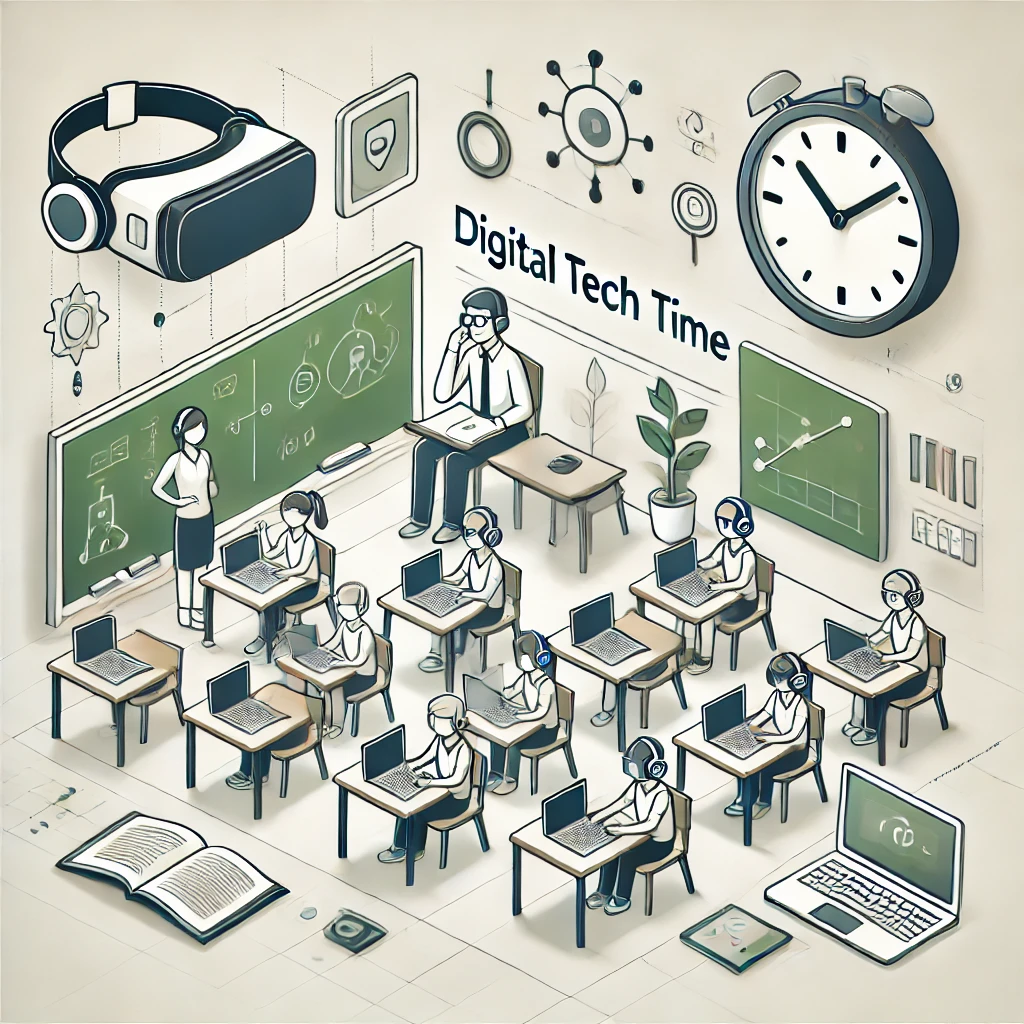Digital tech time has fundamentally transformed the education sector, bridging gaps, introducing innovative methods, and fostering collaboration like never before. As technology becomes increasingly integrated into learning, students and educators are experiencing a paradigm shift in how knowledge is accessed, shared, and applied. This recap explores the educational benefits of digital tech time and how it continues to revolutionize the world of education.

Accessibility: Bridging the Learning Gap
One of the most significant benefits of digital tech time is its ability to make education accessible to a broader audience. Geographic location, economic barriers, and physical disabilities have traditionally been significant obstacles to quality education. Digital tools and platforms have mitigated these challenges, ensuring that learning opportunities are available to everyone.
Online Learning Platforms:
Platforms such as Coursera, Udemy, and Khan Academy offer courses on virtually any subject. These platforms allow learners to access world-class instructors and resources from the comfort of their homes.
Remote Education During Crises:
The COVID-19 pandemic underscored the importance of digital tech time in maintaining educational continuity. Schools and universities worldwide transitioned to online learning, ensuring students could continue their studies despite disruptions.
Education for Underserved Communities:
Digital classrooms and e-learning tools provide quality education to remote or underserved students. Initiatives like Google’s Chromebook distribution programs or low-cost internet services have helped bridge the digital divide.
Innovative Learning Methods
Thanks to digital technology, traditional teaching methods are evolving. New tools and techniques are not only making learning more engaging but also enhancing knowledge retention and understanding.
Augmented Reality (AR) and Virtual Reality (VR):
AR and VR technologies allow students to explore subjects in immersive environments. For example:
- History students can virtually visit ancient landmarks.
- Biology students can explore human anatomy through interactive 3D models.
Artificial Intelligence (AI) in Education:
AI-powered tools personalize the learning experience by analyzing students’ strengths and weaknesses. Adaptive learning systems provide tailored lessons and resources, ensuring students progress at their own pace.
Gamification:
Integrating game-like elements into education motivates students to engage actively with the material. Platforms like Kahoot and Quizizz use quizzes, leaderboards, and rewards to make learning enjoyable.
Fostering Collaboration and Engagement
Digital tech time has redefined collaboration in education, enabling students and educators to connect and work together, regardless of physical location.
Collaborative Tools:
Tools like Google Workspace (Docs, Slides, and Sheets) and Microsoft Teams enable students to collaborate on projects in real-time. Group assignments can now include peers from around the world.
Virtual Classrooms:
Platforms like Zoom, Microsoft Teams, and Google Classroom have become staples for conducting live classes. These tools allow for real-time interaction, discussions, and feedback, replicating traditional classroom experiences in a digital format.
Discussion Forums and Peer Learning:
Online forums, such as Reddit’s education communities or university-specific platforms, encourage students to share ideas, ask questions, and learn from peers globally.
Skill Development and Future Readiness
Digital tech time equips students with essential skills for thriving in a technology-driven world. Beyond traditional academics, these tools emphasize critical thinking, problem-solving, and technical proficiency.
Coding and Digital Literacy:
Platforms like Scratch, Code.org, and Codecademy introduce students to programming and digital literacy from an early age, preparing them for careers in tech and beyond.
for more info
Soft Skills:
Virtual collaboration and project-based learning improve teamwork, communication, and time management skills, which are critical for success in any field.
Research and Information Access:
The Internet has democratized access to information, enabling students to explore topics in depth through resources like online libraries, academic journals, and open-access content.
Overcoming Challenges
While the benefits of digital tech time in education are immense, challenges such as screen fatigue, unequal access to technology, and privacy concerns must be addressed.
Managing Screen Time:
Prolonged screen exposure can lead to fatigue. To address this issue, schools are implementing balanced schedules that combine online and offline activities.
Addressing the Digital Divide:
Governments and organizations are working to provide affordable Internet and devices to students in underserved areas, ensuring equitable access to digital education.
Ensuring Privacy and Security:
With increased reliance on digital tools, protecting student data and ensuring safe online interactions are paramount. Schools are adopting secure platforms and educating students about digital safety.
Conclusion
Digital tech time has revolutionized education, making it more inclusive, engaging, and effective. By leveraging technology, students can access resources and opportunities that were once out of reach. Educators can adopt innovative methods to enhance learning experiences and prepare students for the future.



